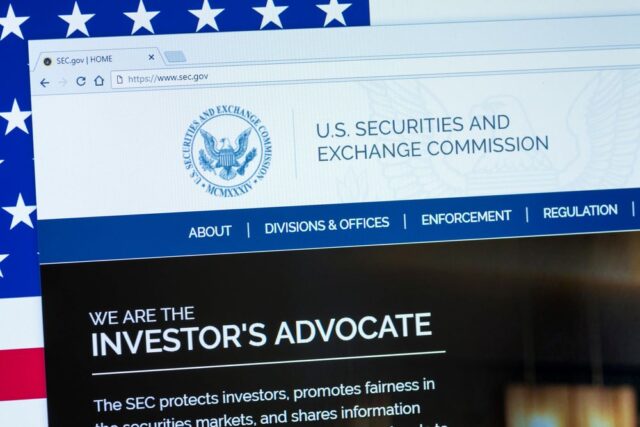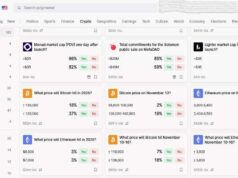TL;DR
- SEC Chair Paul Atkins introduced a four-tier token taxonomy under Project Crypto, stating that most tokens are not securities and that investment contracts “don’t last forever.”
- The framework signals a major doctrinal shift, but nothing changes legally yet: enforcement continues, exchanges still follow current rules, and Congress has not finished the market-structure legislation needed to make the taxonomy binding.
SEC Chair Paul Atkins has drawn a sharp line under the Gensler era, declaring that most crypto tokens trading today are not securities and that investment contracts “don’t last forever.” But even as the SEC’s Project Crypto unveils a four-tier token taxonomy, the path to legal certainty remains long. Congress is divided, rule making is pending, and enforcement remains the SEC’s primary language.
Why Atkins’ Statement Matters Now
For years, the SEC blurred fundraising contracts with the tokens that emerged from them. This created a de facto view that almost everything was a security. Projects that launched through private placements or token sales found themselves under a permanent cloud, regardless of how decentralized their networks later became. Exchanges struggled to list assets without risking action, and teams faced uncertainty even when their tokens functioned as utilities or commodities.
Now Atkins is signaling the first clear break from that approach. He is shifting the SEC away from treating crypto as a monolith and toward acknowledging that decentralization, use-case, and economic reality matter.
Project Crypto: The SEC’s Four-Tier Token Taxonomy
The centerpiece of Atkins’ announcement is a structured model for categorizing tokens under Project Crypto. The SEC’s new token taxonomy would distinguish economic functions rather than marketing labels.
1. Digital Commodities / Network Tokens
These are native assets that support decentralized systems. They work as medium-of-exchange or network fuel rather than investor claims. Because of this, they resemble commodities and could fit within a broader digital commodities framework instead of securities rules.
2. Digital Collectibles
Next are NFTs and similar assets tied to art, identity, or non-fungible utility. They are not automatically exempt from scrutiny, but their primary use lies outside financial speculation. Even so, marketing practices remain relevant to their treatment.
3. Digital Tools / Utility Tokens
These tokens provide access, governance, or protocol functions. Their regulatory status depends heavily on decentralization and how the tokens are used in practice. Here, economic reality remains central when applying the investment contract test.
4. Tokenized Securities
Finally, tokenized stocks, bonds, fund shares, and revenue-sharing instruments sit in this category. The fact that they are tokenized does not alter their nature. These remain subject to securities oversight, and platforms listing such assets must follow full SEC rules.
Together, the four buckets offer the first structured token taxonomy four-tier model coming from the SEC itself, though the framework is descriptive rather than binding.
The Doctrinal Shift: “Investment Contracts Don’t Last Forever”
Atkins emphasized a point long debated but never formally articulated by the Commission: the security is often the contract, not the underlying asset. He used the classic Howey orange-grove example to show that once the managerial effort fades and the network stands on its own, the asset tied to the offering may no longer satisfy the investment contract test.
This is a meaningful shift. It opens the door for decentralized network tokens to “graduate” from securities treatment as their ecosystems mature. It also separates capital formation from the long-term life of the token. As a result, it addresses years of frustration with open-ended securities exposure.
What This Changes — and What It Doesn’t
Despite the announcements, much of the legal environment remains unchanged.
What changes now
- The SEC is aligning more visibly with economic reality.
- Market participants now have a conceptual basis to distinguish tokens from the contracts that launched them.
- The SEC’s tone on crypto oversight is shifting toward structure instead of pure enforcement.
What does not change
- The crypto securities classification of any token remains fact-specific.
- No safe harbor, exemption, or codified criteria exist yet.
- Exchanges still bear listing risk without clear federal rules.
- Token teams may still face enforcement if they make investment-style promises or rely heavily on managerial promotion.
Where uncertainty persists
- The criteria for decentralization remain undefined.
- Transitional pathways for maturing networks are still theoretical.
- Much depends on how the SEC codifies the principles announced under digital asset regulation.
Congress and the Missing Market-Structure Backbone
Atkins’ framework implicitly depends on future legislation. Without a federal market-structure statute, any shift toward CFTC jurisdiction in areas involving CFTC vs SEC crypto roles remains incomplete. The House has already passed the Digital Asset Market Clarity Act of 2025, its main crypto market structure bill. Also, the Senate received it in September and sent it to the Banking, Housing, and Urban Affairs Committee for review. In parallel, the Senate Agriculture Committee has released a bipartisan discussion draft that builds on the House bill and would further define how digital commodities and tokenized securities fit into U.S. digital asset regulation. However, none of these proposals has cleared the full Senate yet, so the SEC’s Project Crypto still operates alongside an unfinished legislative process.
>>> Read more: Crypto Market Structure Bill Stalls in Senate
Enforcement Isn’t Going Away
Atkins was explicit that the SEC will continue pursuing fraud and misconduct. Rules may evolve, but anti-fraud provisions apply regardless of taxonomy category. Tokenized assets designed to mimic securities, including many tokenized securities, will stay within the SEC’s perimeter with no ambiguity.
For exchanges and issuers, this means the new message is not leniency. Instead, it is structure.
What to Watch Next
A few developments could signal how quickly the taxonomy turns into actionable regulation:
- Whether the SEC issues formal rule making references tied to the token taxonomy.
- Any CFTC statements clarifying digital commodities supervision.
- Congressional movement on the market-structure bill.
- How U.S. exchanges interpret the categories in their listing reviews.
- Whether large-cap tokens attempt to show “maturity” under the doctrine.
>>> Read more: CFTC to Approve Leveraged Spot Crypto Trading
Conclusion: A Real Reset — But Not a Regulatory Green Light
Atkins may have delivered the sharpest philosophical pivot on U.S. crypto since 2017, but the actual ground rules have not been written yet. The SEC has moved from treating tokens as permanent securities to recognizing that networks and economic functions evolve. Yet without legislation or rule making, the taxonomy remains a conceptual framework rather than a legal shield.
It is a real reset, just not the regulatory clarity the industry is hoping for.
Readers’ frequently asked questions
What exactly is included in the Digital Asset Market Clarity Act that passed the House?
The Digital Asset Market Clarity Act of 2025 defines “digital commodities,” formalizes when a crypto asset is regulated by the CFTC versus the SEC, and sets registration requirements for digital commodity exchanges. It also directs the SEC to distinguish between digital commodities and tokenized securities based on economic function rather than token form.
Which Senate committees are currently handling crypto market-structure legislation?
Two Senate committees are involved. The Banking, Housing, and Urban Affairs Committee is reviewing the House-passed market-structure bill. The Senate Agriculture Committee has issued a bipartisan discussion draft that focuses on digital commodities and the CFTC’s role. Both committees are working in parallel on different parts of the regulatory framework.
Does the SEC’s proposed token taxonomy affect how exchanges must register today?
No. The SEC’s four-tier token taxonomy is only a policy framework at this stage. Exchanges must continue to follow existing federal and state rules, including securities laws where applicable, until formal rulemaking or congressional action provides new registration pathways.
What is in it for you? Action items you might want to consider
Review how your project’s token fits into the four practical categories used by policymakers
Even though the SEC’s token taxonomy is not yet binding, teams should map their token’s current function (commodity, collectible, tool, or security) to anticipate future compliance steps.
Monitor developments in both Senate committees handling digital asset legislation
The Banking Committee and the Agriculture Committee are working on different parts of market-structure rules. Staying updated will help projects anticipate which regulatory regime may apply.
Reassess exchange listing frameworks under existing law
Since the SEC’s token taxonomy has not yet changed registration requirements, platforms should continue to review tokens under current securities and commodities rules and prepare documentation that reflects economic function, decentralization, and issuer activity.










